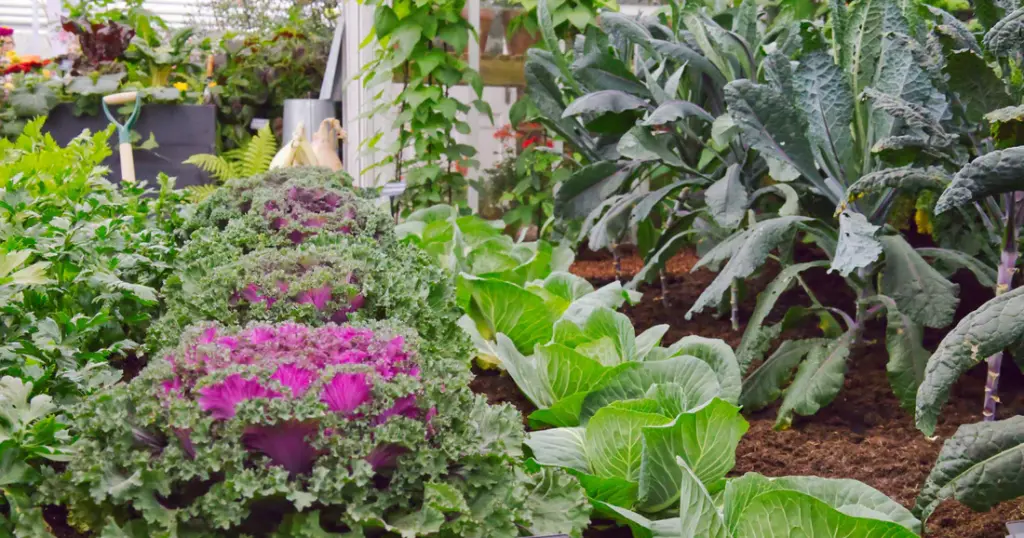January might seem like a quiet month for gardening, but there are plenty of plants that can thrive when sown or planted during this time.
Understanding what to plant in January, based on your climate and soil conditions, can set your garden up for success throughout the year. This guide will delve into various plants suitable for January planting, providing tips and tricks to ensure robust growth and bountiful harvests.

Why Plant in January?
Winter planting offers several advantages:
- Cold Stratification: Some seeds require cold exposure to break dormancy and germinate.
- Early Start: Getting a head start on the growing season can result in earlier and more abundant harvests.
- Pest Control: Cooler temperatures reduce the presence of many pests, making it easier to manage young plants.
- Efficient Use of Time: Gardening in winter can help spread out the workload, preventing a springtime rush.
| VEGETABLES | PLANTING DATE | HOW TO SOW |
|---|---|---|
| Cabbage | January 1 | Seedling |
| Cauliflower | January 1 | Seedling |
| Onions | January 1 | Direct Sow |
| Garlic | January 1 | Direct Sow |
| Potatoes | January 15 | Direct Sow |
| Radishes | January 15 | Direct Sow |
| Carrots | January 15 | Direct Sow |
| Turnips | January 15 | Direct Sow |
| Parsnips | January 15 | Direct Sow |
| Bok Choy / Pak Choy | January 15 | Direct Sow |
| Broccoli | January 20 | Seedling |
| Chili Peppers | January 20 | Seedling |
| Rhubarb | January 20 | Seedling |
| Romaine Lettuce | January 31 | Direct Sow |
| Mustard Greens | January 31 | Direct Sow |
| Kale | January 31 | Direct Sow |
| Spinach | January 31 | Seedling |
| Eggplants | January 31 | Seedling |
| Snow Peas | January 31 | Direct Sow |
| Fava Beans | January 31 | Seedling |
| Asparagus | January 31 | Direct Sow |
Understanding Your Zone
Before diving into what to plant, it’s crucial to understand your USDA Hardiness Zone. This classification helps determine which plants are best suited for your area’s average minimum winter temperatures. Here’s a brief overview:
- Zones 1-3: Very cold climates with harsh winters.
- Zones 4-6: Cold to moderately cold climates.
- Zones 7-9: Mild winters with some cold snaps.
- Zones 10-13: Warm to hot climates, often frost-free.
What to Plant in January: A Zone-Wise Breakdown
Zones 1-3
Gardening in these zones during January is challenging due to the extreme cold. However, indoor gardening and using cold frames or greenhouses can extend your growing season.
Indoors
- Herbs: Basil, parsley, cilantro, and chives can be started indoors.
- Leafy Greens: Lettuce, spinach, and kale thrive in cooler indoor conditions.
- Microgreens: Quick-growing and nutrient-dense, perfect for small spaces.
Cold Frames/Greenhouses
- Hardy Vegetables: Kale, spinach, and Swiss chard can withstand lower temperatures with some protection.
- Root Vegetables: Radishes and turnips can be started for an early spring harvest.
Zones 4-6
In these zones, January planting can be a mix of indoor starts and hardy outdoor crops.
Indoors
- Tomatoes and Peppers: Start seeds indoors for transplanting after the last frost.
- Herbs: Rosemary, thyme, and oregano are good indoor choices.
Outdoors (with protection)
- Garlic: Planting garlic in January allows for a summer harvest.
- Onions: Onion sets can be planted in late January if the ground is workable.
- Broad Beans: Hardy and able to withstand colder temperatures with mulch protection.
Zones 7-9
These zones offer more flexibility for outdoor planting in January.
Outdoors
- Cool-Season Vegetables: Carrots, beets, and radishes can be sown directly.
- Leafy Greens: Lettuce, arugula, and mustard greens thrive in cooler weather.
- Peas: Both snap and shelling peas can be planted in late January.
Indoors
- Warm-Season Vegetables: Start tomatoes, eggplants, and peppers indoors for an early spring transplant.
Zones 10-13
In these warmer zones, January is an active gardening month with many options for outdoor planting.
Outdoors
- Tomatoes: Plant transplants for an early harvest.
- Squash and Zucchini: Direct sow seeds or transplant seedlings.
- Melons: Cantaloupe and watermelon can be planted for a spring harvest.
- Herbs: Basil, mint, and dill thrive in mild winter conditions.
Best Practices for January Planting
Soil Preparation
- Testing: Conduct a soil test to determine pH and nutrient levels.
- Amending: Add compost, manure, or other organic matter to improve soil structure and fertility.
Seed Starting
- Containers: Use clean, sterile containers to prevent disease.
- Soil: Choose a high-quality seed-starting mix.
- Lighting: Provide adequate light with grow lights or a sunny windowsill.
Outdoor Planting
- Mulching: Apply mulch to insulate the soil and retain moisture.
- Row Covers: Use row covers or cloches to protect young plants from frost.
- Watering: Water consistently, ensuring soil stays moist but not waterlogged.
Detailed Planting Guide: A Seasonal Overview
Here’s a handy seasonal guide to help you manage your garden care throughout the year:
Vegetables
| Month | Cold Hardy | Indoor Starts | Direct Sow | Notes |
|---|---|---|---|---|
| Jan | Kale, Spinach, Swiss Chard | Tomatoes, Peppers, Herbs | Radishes, Turnips (Zones 4-6) | Use cold frames in colder zones |
| Feb | Broccoli, Cabbage | Tomatoes, Peppers, Herbs | Carrots, Beets (Zones 7-9) | Start hardening off indoor plants |
| Mar | Peas, Lettuce, Onions | Warm-season vegetables | Most cool-season crops | Prepare outdoor beds |
| Apr | Potatoes, Asparagus | Melons, Squash | Warm-season crops (Zones 10-13) | Watch for late frosts |
| May | Beans, Corn, Cucumbers | – | Warm-season crops | Plant frost-sensitive plants |
| Jun | – | – | Most vegetables | Maintain consistent watering |
| Jul | – | – | Fall crops (Zones 10-13) | Monitor for pests |
| Aug | – | – | Leafy greens | Start fall garden planning |
| Sep | Spinach, Kale | – | Leafy greens | Prepare for cooler weather |
| Oct | Garlic, Onions | – | Cool-season crops | Mulch and protect soil |
| Nov | Broad Beans, Peas | – | Cool-season crops | Plan winter protection |
| Dec | – | – | Garlic (Zones 7-9) | Reflect on garden success |
Herbs
| Month | Cold Hardy | Indoor Starts | Direct Sow | Notes |
|---|---|---|---|---|
| Jan | Parsley, Chives | Basil, Cilantro, Oregano | – | Indoor herbs need good light |
| Feb | Thyme, Rosemary | Basil, Cilantro | – | Begin transitioning outdoors |
| Mar | Sage, Mint | Warm-season herbs | Parsley, Chives | Prepare herb garden beds |
| Apr | – | Warm-season herbs | Basil, Dill | Monitor for late frosts |
| May | – | – | Most herbs | Plant tender herbs outdoors |
| Jun | – | – | Most herbs | Maintain consistent watering |
| Jul | – | – | Cilantro, Basil (Zones 10-13) | Trim regularly to prevent bolting |
| Aug | – | – | Fall herbs | Prepare for fall planting |
| Sep | Parsley, Chives | – | Parsley, Chives | Mulch and protect soil |
| Oct | Thyme, Rosemary | – | Thyme, Rosemary | Harvest and dry herbs |
| Nov | Sage, Mint | – | Cool-season herbs | Prepare for cooler weather |
| Dec | – | – | Sage, Mint (Zones 7-9) | Reflect on herb garden success |
Tips for Successful Winter Gardening
Cold Frames and Greenhouses
- Cold Frames: Ideal for extending the growing season. Place in a sunny spot and ensure adequate ventilation.
- Greenhouses: Offer more control over temperature and humidity. Regularly monitor and adjust conditions to suit plant needs.
Indoor Gardening
- Lighting: Use full-spectrum grow lights to mimic natural sunlight.
- Humidity: Maintain higher humidity levels with a humidifier or water trays.
- Temperature: Keep indoor growing areas warm, ideally between 65-75°F (18-24°C).
Pest Management
- Prevention: Clean pots and tools to prevent the spread of pests.
- Inspection: Regularly check plants for signs of pests or disease.
- Control: Use organic methods like neem oil or insecticidal soap if needed.
Mulching and Insulation
- Mulch: Apply a thick layer of mulch to protect soil and retain moisture.
- Insulation: Use straw, leaves, or other organic materials to insulate plant roots.
Conclusion
Planting in January is not only possible but can be incredibly rewarding with the right approach. By understanding your USDA Hardiness Zone and following best practices for soil preparation, seed starting, and outdoor planting, you can set your garden up for a successful year. Whether you’re growing vegetables, herbs, or flowers, January offers unique opportunities to get ahead and enjoy a thriving garden.
Happy gardening, and may your January planting be fruitful and enjoyable!



